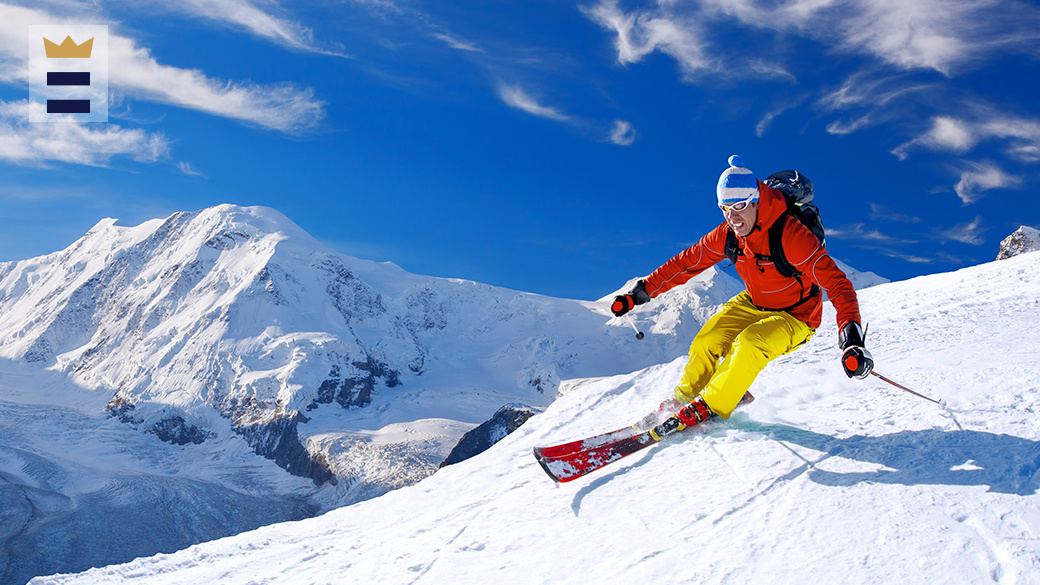
Overall snow pants offer a comfortable fit and an array of design options, making them a top choice for winter sports enthusiasts. These pants can be an essential part of your gear, whether you are into backcountry skiing or lift assisted snowboarding.
The Truth About Overall Snow Pants
There are many things to consider when it comes to snow pants. These include the type of insulation used and whether there are pockets or bibs. While your focus may be on the look of the garments it is important that you also consider comfort and body temperature.
Insulated Snow Pants
Many snow pants combine a combination waterproof, windproof shell fabric with insulation to keep you warm during winter activities. While these insulated ski and snowboard pants don't have as much style appeal than standard shells they make a great alternative for winter sportsmen who live in colder climates.
Patagonia's Powdertown pants are an example of this combination. They combine a high-quality waterproof membrane and a soft, taffeta linedr to deliver great next-to skin comfort. They also use a thin dose of 60-gram synthetic insulation to keep you warmer and dryer when it's wet.

Cargo Snow Pants
Designed for snowboarders, cargo snow pants typically feature a range of zippered rear, cargo, and thigh pockets for stashing gear, snacks, and gloves. They can be bulky and restrict movement so we advise against packing them too full.
Pulse snow pants
Pulse snow pants are a popular choice among snowboarders. They have a similar design as traditional snowboarding designs but include an extra layer of material at the waist for warmth. This layer protects your bottom and wicks sweat, keeping you cool.
Pants for Reflective Snow
An ideal choice for anyone who spends time outside in cold temperatures is a pair of reflective snow pants. A layer of Lumentex(r), reflective material can be added to help you stand out even in low-visibility environments.
The reflective layer is designed to deflect light and reflect it, so you can be more visible on the slopes and in low-light environments like snowy sled trails. Some models also feature a reflective strip down the legs and an adjustable waistband that can be cinched up for extra visibility.
Bibs
People who don’t need the protection that a baselayer provides will choose bibs instead of snow pants. This is because bibs are more comfortable and provide warmth. These bibs can be made from lightweight, breathable materials such as polyester or merino wool.

You may consider purchasing a bib with more durable construction and extra features like a zippered glove and cargo pockets. Carhartt's bibs feature a heavyweight polywool blend, which is fast drying and repels odors.
Backcountry Snow Pants
Most skiers and snowboarders will have to deal with a fair amount of rain, so it's important to have a waterproof pair of ski and snowboard pants to stay safe and dry on the slopes. Hard-charging resort and sidecountry skiers will often prefer a shell, but those who are planning to explore backcountry areas or go for long-distance backcountry tours can consider a bib with a supple, stretchy hardshell fabric that allows air to flow around the knees and thighs.
FAQ
These are the things that you must remember when traveling.
When you travel, you'll find yourself in situations with little time to make decisions. Be ready to adapt.
You may be stuck someplace for hours or days, or even months. If you've planned ahead, you'll have food, water, shelter, and a place to sleep. You may need to improvise if you don't plan ahead.
In these cases, you'll probably have to rely on what you know how to do best. That means taking quick decisions based only on intuition and experience.
But sometimes, you won't have any choice. You might find yourself in an area without cell service, out of gas or robbed. You will need to be flexible to any situation that presents itself.
The key is to keep calm, stay focused and act decisively. Don't panic. Instead, try to focus on the things that you can control.
If you find yourself lost in the woods you can choose which way to go. Or if you're hungry, you can eat berries or mushrooms. Rainwater can be drank or snowmelt.
If you're tired, rest. You can wrap up if you're cold. If you're wet, you can change clothes. Whatever you decide, you'll feel better if you stay positive.
Where should I store my luggage?
There are many options. The most popular option is to use lockers in airports. These are normally located near the security area. They can be purchased for between $5-10 per daily, depending upon the size of the locker.
You could also rent a storage facility. These units are often located in large shopping centers or hotels. There are discounts available for multiple units, although prices can vary.
You can also hire a porter. You can hire a porter to help you carry your bags from the carousel to the room. A small fee is charged each time the porter helps you.
What should you do the first time you arrive at your travel destination after you have arrived?
An itinerary is essential for every trip. It will let you know what to expect, and where to go next.
It is important to plan ahead so you don't forget anything.
For example, if you're going to be visiting a city for more than one day, you should research which museums, parks, and landmarks you'd like to visit.
Also, you may want to look into getting a map of the area and reading up on the region's history.
How long does it take to fly between two countries?
The distance between the airports, as well the weather conditions, can impact the time required to fly.
Average flight time is 3 hours.
The actual flight time is dependent on many factors, including the airline, aircraft type, delays at the airport, weather conditions, and the airline.
Statistics
- According to Maori legends, this park holds 14 fjords that were all carved by a giant stonemason with an adze. (busytourist.com)
- They're also likely to offer babysitting services, in case you'd like to have dinner one night after 7 p.m. (travelandleisure.com)
- Alcoholic beverages with more than 24% but not more than 70% alcohol are limited in checked bags to 5 liters (1.3 gallons) per passenger and must be in unopened retail packaging. (tsa.gov)
- That's an 18% jump from 2019, the previous record year. (travelandleisure.com)
- Alcoholic beverages with 24% alcohol or less are not subject to limitations in checked bags. (tsa.gov)
External Links
How To
How to plan for your next vacation
Planning a trip involves many things like booking flights, hotels, car rentals, activities, etc. This includes important considerations like budget, destination and weather forecast.
These are important points to remember when planning your next vacation.
To ensure you get everything right, we have created a step-by-step guide to help you plan your next vacation. This guide has been prepared based on our experience and customer feedback. We hope this guide helps you to plan your next vacation with minimal hassle.
Steps:
-
Your Budget is an important step in planning your trip. Before you can start planning where and what you will do, you must first know how much you are willing to spend. You might have to cancel your plans if you don't have enough money.
-
Book Flights - The first thing you should do after deciding on your budget is book your tickets. You should ensure that you get the best deal possible at the lowest price. Also, check if airlines offer any special deals during certain seasons. These deals could help you save a lot of cash.
-
Pick Your Destination. Once you've booked your tickets, the next step is to decide where to travel. Multiple factors will play a role in choosing the destination you choose, such as location (wherever you are), climate (what season), culture (how friendly and affordable it is), cost (how affordable it can be) and cost.
-
Find Accommodations - After choosing your destination, the next step would be finding accommodations. There are many options for accommodation, from budget hostels to luxurious suites. Your needs and preferences will determine the type of accommodation that you choose. If you are looking for somewhere close to the center of the city, a hotel might not be the best option. A homestay might be a better option if you are looking for quieter places far from the crowds.
-
Select Activities & Attractions - After selecting your accommodation, now is the time to select the activities and attractions you wish to include in your itinerary. Depending on your length of stay, you may choose to add or remove activities.
-
You can now determine your schedule. To achieve maximum value from your trip, you should stick to a fixed schedule. You can still enjoy your trip if you are able to travel at your own pace.
-
Create itinerary – This allows you to organize all of the details for your trip. You should list all the details, from flights to accommodation to activities to restaurants.
-
Research online - Make sure you do your research before you leave for your trip. Read reviews and testimonials to find out what other travelers think about different destinations. This way, you will be able to plan accordingly.
-
Pack Lightly - One of the biggest mistakes people make when packing is bringing too many clothes. Instead of bringing five sets of clothes, bring three. Bring clothing appropriate for the weather you're visiting.
-
Make sure you are prepared - Before you leave for your trip, make sure that everything is in order. You don't want your trip to be ruined by searching for vital documents while you're in transit.